Abstract
The clay minerals montmorillonite and kaolinite protected bacteria, including actinomycetes, and filamentous fungi from the inhibitory effects of cadmium (Cd). Montmorillonite provided greater protection than did equivalent concentrations of kaolinite. The protective ability of the clays was correlated with their cation exchange capacity (CEC). The greater the CEC, the greater the absorbancy of exogenous Cd by the exchange complex and the greater the protection. The greater protection afforded by montmorillonite, as compared to kaolinite, was correlated with its higher CEC. Clays homoionic to Cd did not protect against exogenous Cd, as the exchange complex was already saturated with Cd. Montmorillonite homoionic to Cd was more detrimental to microbial growth than was kaolinite homoionic to Cd, as more Cd was present on and apparently desorbed from the montmorillonite.
Full text
PDF
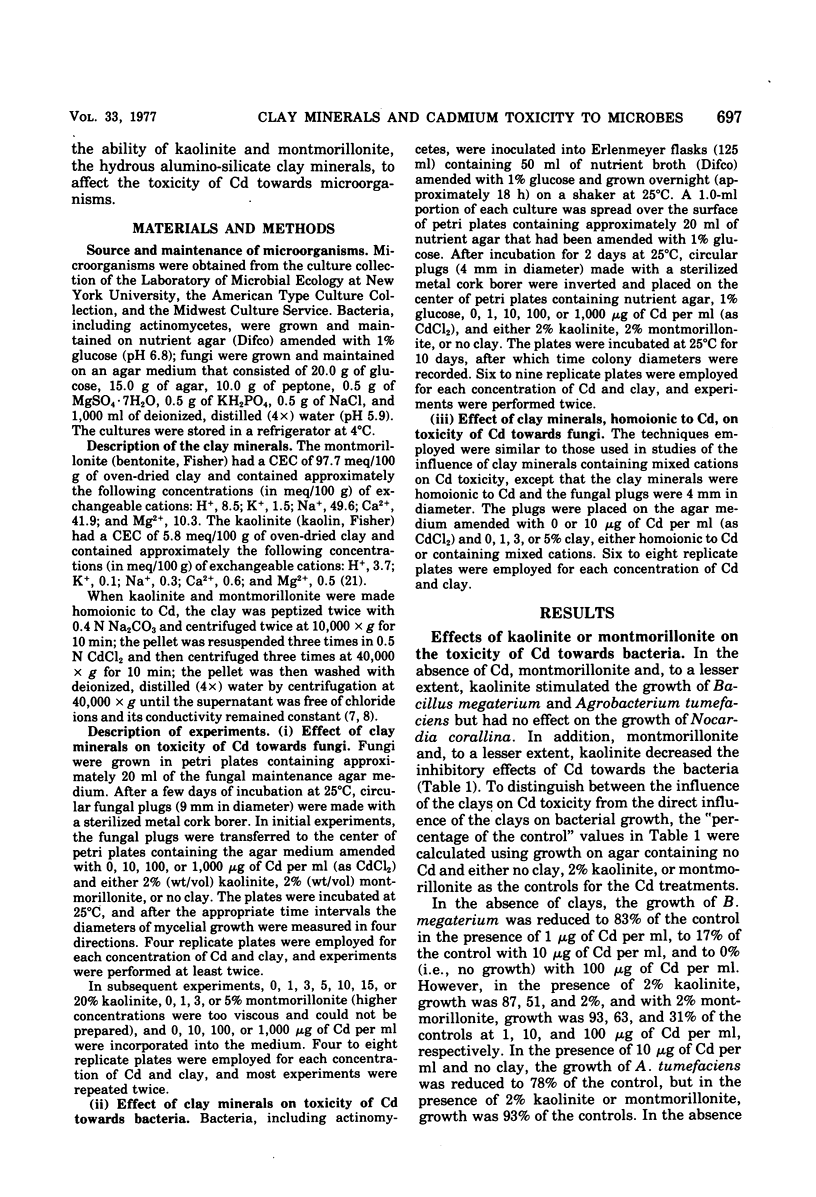
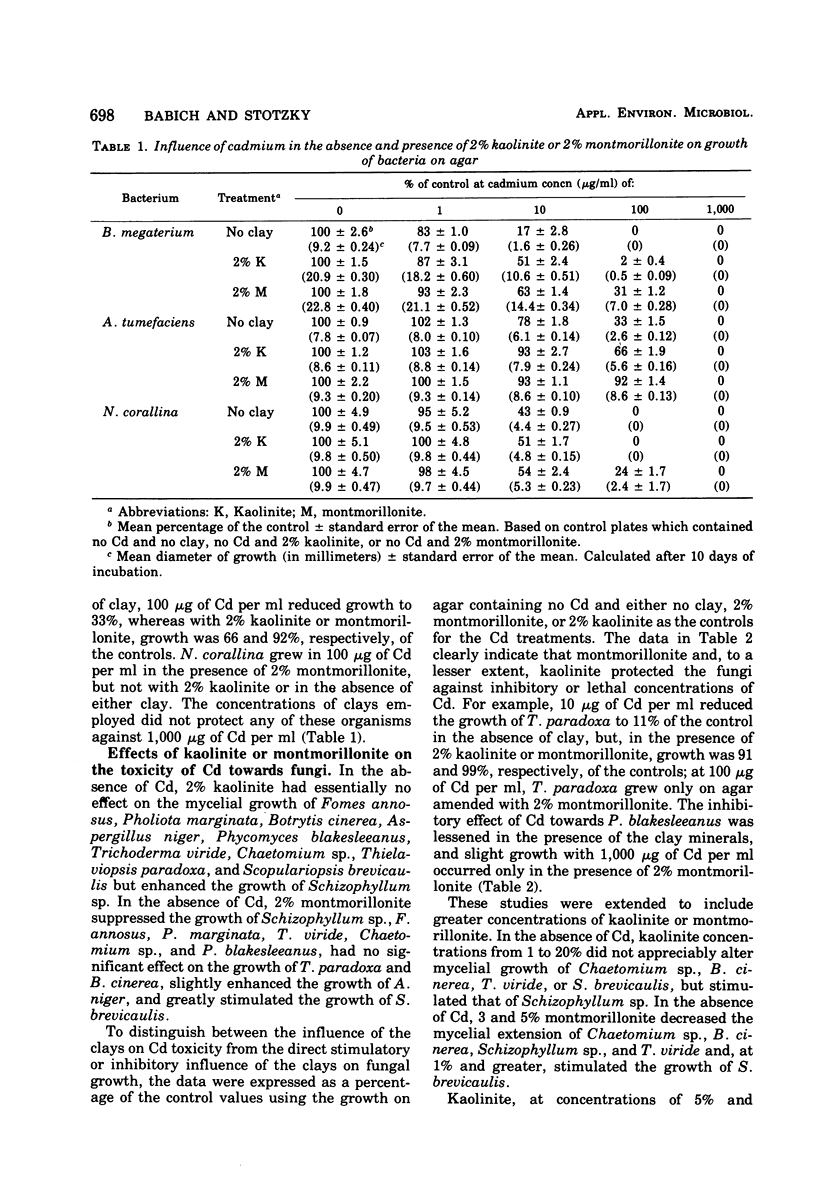
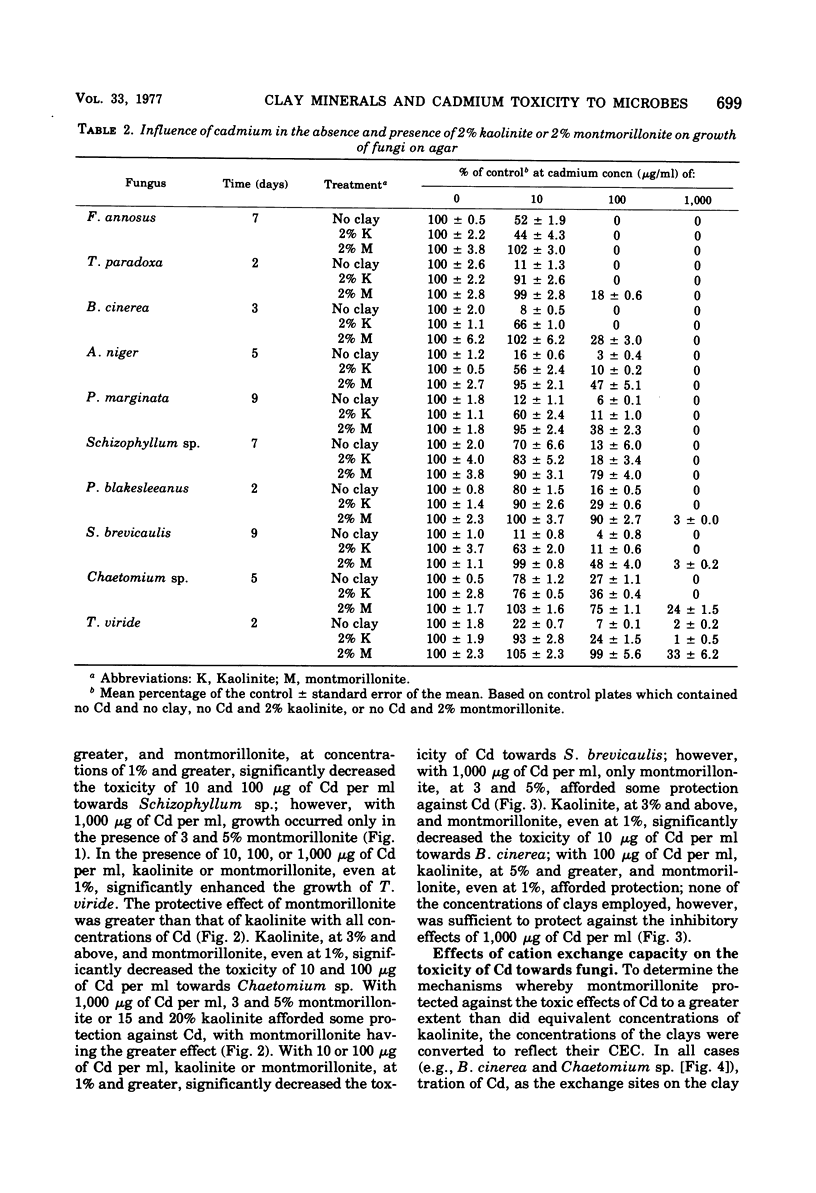
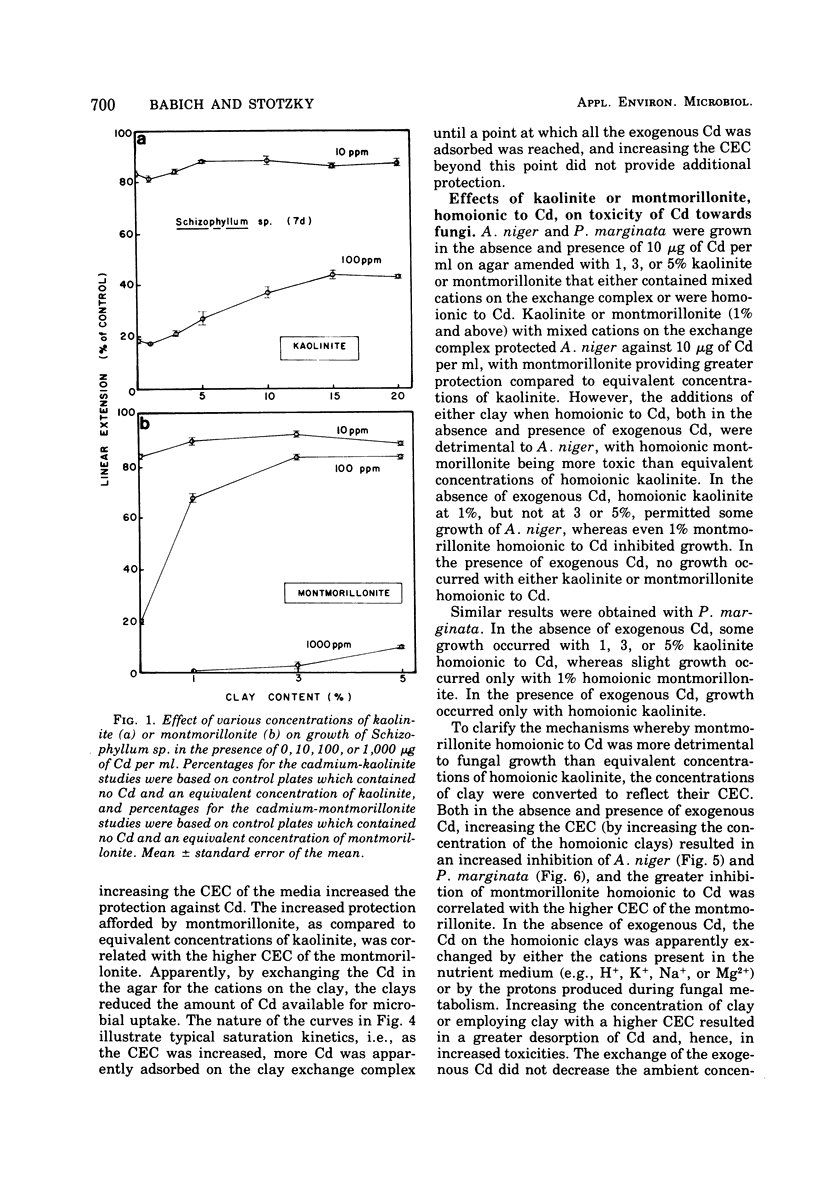
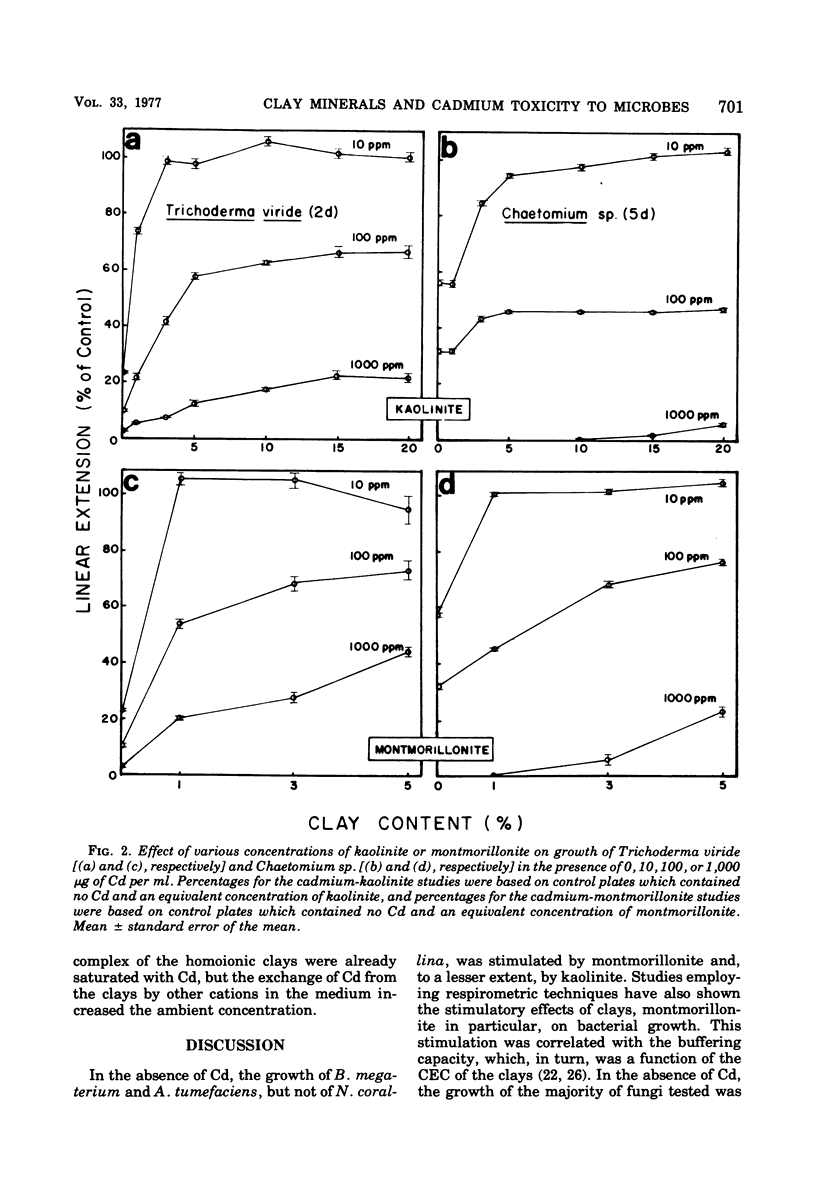
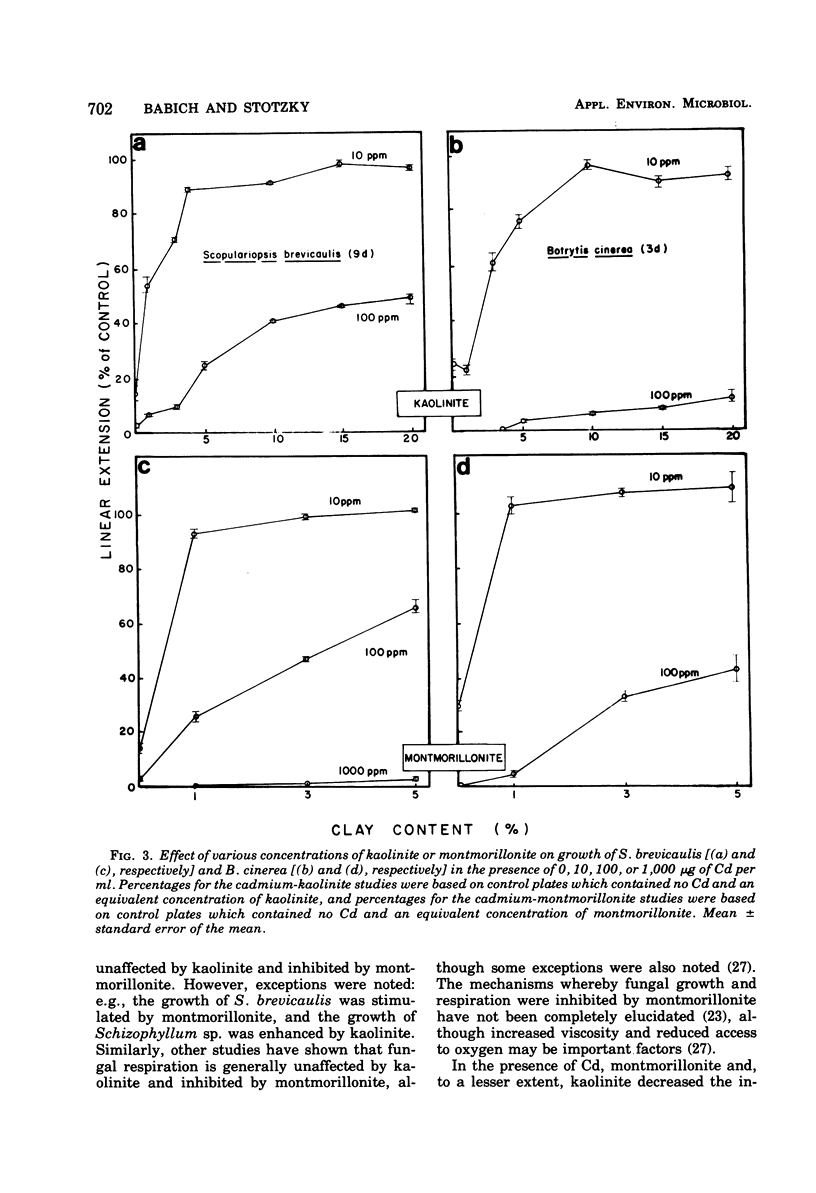
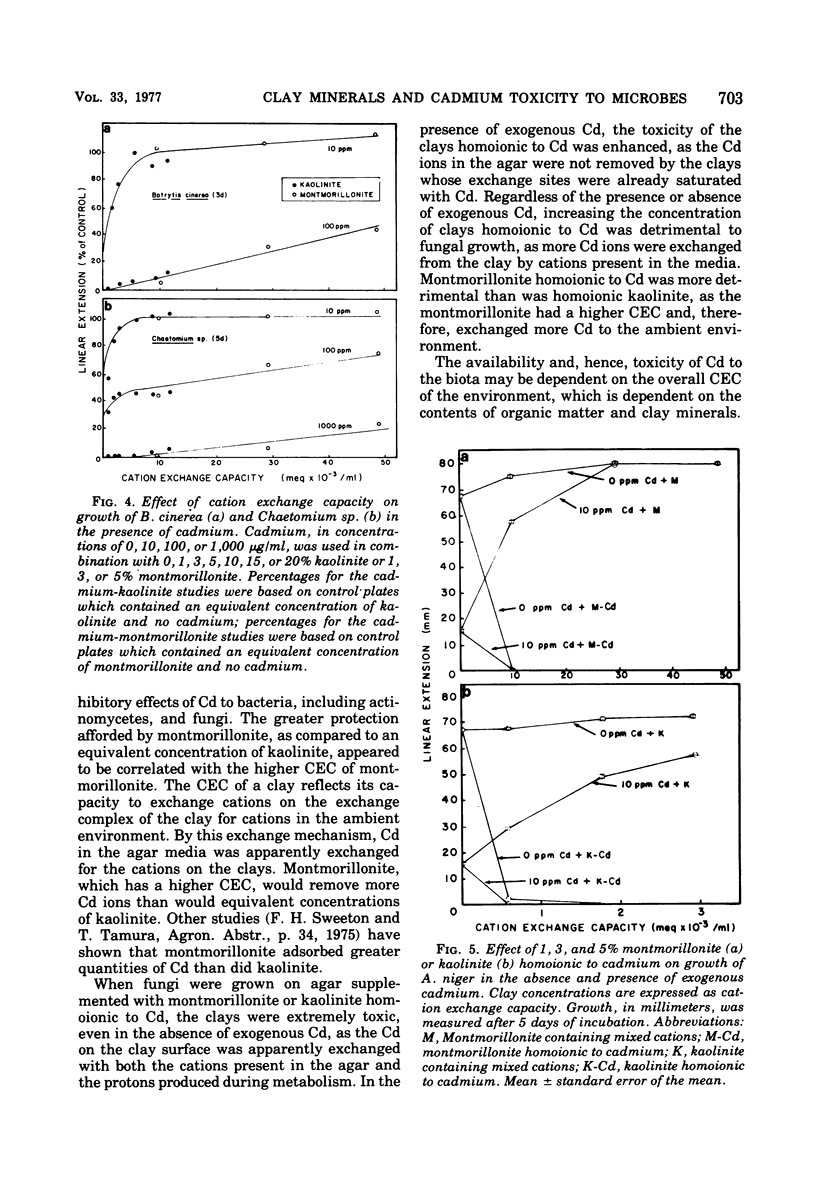
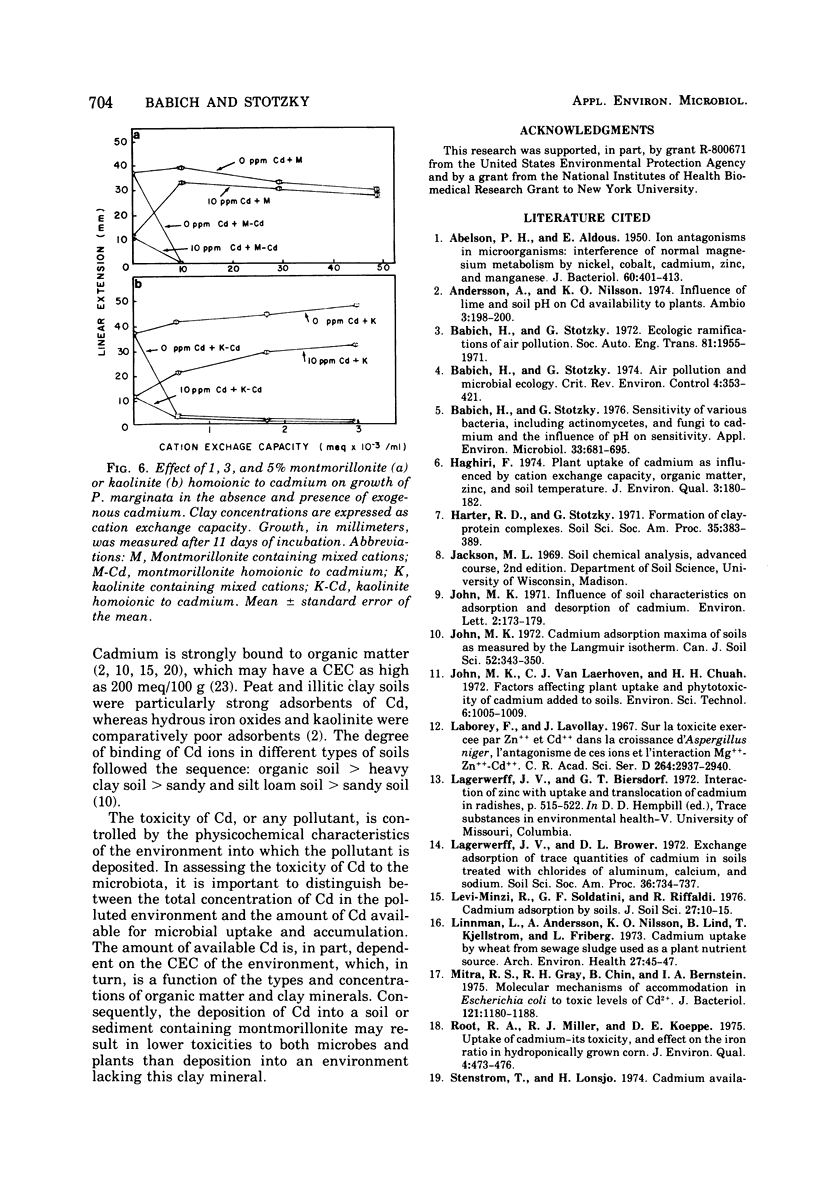

Selected References
These references are in PubMed. This may not be the complete list of references from this article.
- ABELSON P. H., ALDOUS E. Ion antagonisms in microorganisms; interference of normal magnesium metabolism by nickel, cobalt, cadmium, zinc, and manganese. J Bacteriol. 1950 Oct;60(4):401–413. doi: 10.1128/jb.60.4.401-413.1950. [DOI] [PMC free article] [PubMed] [Google Scholar]
- Babich H., Stotzky G. Sensitivity of Various Bacteria, Including Actinomycetes, and Fungi to Cadmium and the Influence of pH on Sensitivity. Appl Environ Microbiol. 1977 Mar;33(3):681–695. doi: 10.1128/aem.33.3.681-695.1977. [DOI] [PMC free article] [PubMed] [Google Scholar]
- Laborey F., Lavollay J. Sur la toxicité exercée par Zn et Cd dans la croissance d'Aspergillus niger, l'antagonisme de ces ions et l'interaction Mg-Zn-Cd. C R Acad Sci Hebd Seances Acad Sci D. 1967 Jun 19;264(25):2937–2940. [PubMed] [Google Scholar]
- Linnman L., Andersson A., Nilsson K. O., Lind B., Kjellström T., Friberg L. Cadmium uptake by wheat from sewage sludge used as a plant nutrient source. A comparative study using flameless atomic absorption and neutron activation analysis. Arch Environ Health. 1973 Jul;27(1):45–47. doi: 10.1080/00039896.1973.10666306. [DOI] [PubMed] [Google Scholar]
- Mitra R. S., Gray R. H., Chin B., Bernstein I. A. Molecular mechanisms of accommodation in Escherichia coli to toxic levels of Cd2+. J Bacteriol. 1975 Mar;121(3):1180–1188. doi: 10.1128/jb.121.3.1180-1188.1975. [DOI] [PMC free article] [PubMed] [Google Scholar]
- Stotzky G. Activity, ecology, and population dynamics of microorganisms in soil. CRC Crit Rev Microbiol. 1972 Nov;2(1):59–137. doi: 10.3109/10408417209108383. [DOI] [PubMed] [Google Scholar]
- Stotzky G. Influence of clay minerals on microorganisms. 3. Effect of particle size, cation exchange capacity, and surface area on bacteria. Can J Microbiol. 1966 Dec;12(6):1235–1246. doi: 10.1139/m66-165. [DOI] [PubMed] [Google Scholar]
- Stotzky G. Influence of clay minerals on microorganisms. II. Effect of various clay species, homoionic clays, and other particles on bacteria. Can J Microbiol. 1966 Aug;12(4):831–848. doi: 10.1139/m66-111. [DOI] [PubMed] [Google Scholar]
- Stotzky G., Rem L. T. Influence of clay minerals on microorganisms. I. Montmorillonite and kaolinite on bacteria. Can J Microbiol. 1966 Jun;12(3):547–563. doi: 10.1139/m66-078. [DOI] [PubMed] [Google Scholar]
- Stotzky G., Rem L. T. Influence of clay minerals on microorganisms. IV. Montmorillonite and kaolinites on fungi. Can J Microbiol. 1967 Nov;13(11):1535–1550. doi: 10.1139/m67-202. [DOI] [PubMed] [Google Scholar]


